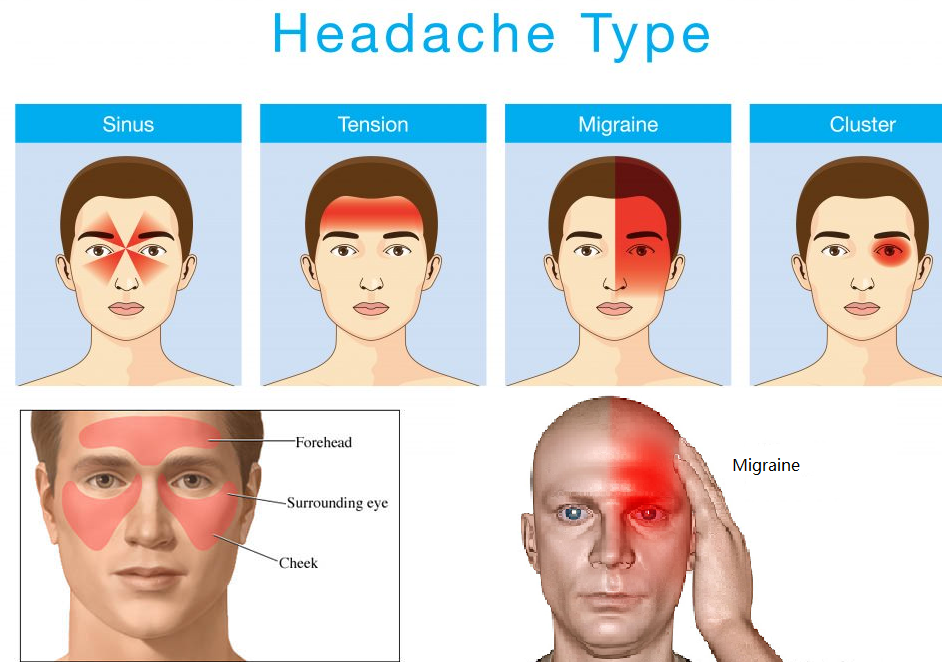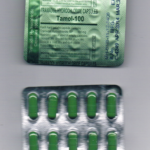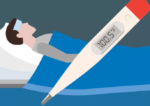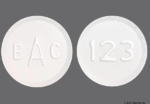Ocular Migraines

Symptoms
You may hear your doctor call ocular migraine by some other names, such as visual, retinal, ophthalmic, or monocular migraines. Warning signs include:
Vision problems that affect just one eye. These include migraine with an aura or a change in vision. It might happen for only a few minutes or up to 30 minutes.
A headache that lasts 4 to 72 hours. It tends to:
- Affect one side of your head
- Feel moderately or very painful
- Throb or pulsate
- Feel worse when you move around
Other symptoms may include:
- Nausea
- Vomiting
- Being sensitive to light or sound
Causes
Experts aren’t sure what causes ocular migraine. Some think the problem is linked to:
- Spasms in blood vessels in the retina, the lining in the back of the eye
- Changes that spread across the nerve cells in the retina
It’s rare, but people who have these types of migraine may have a higher risk of permanent vision loss in one eye. Experts don’t know whether medications that prevent migraines — such as tricyclic antidepressants or anti-seizure medications — can help prevent that vision loss. But if you have ocular migraine, even if it goes away on its own, it’s a good idea to talk to your doctor about your symptoms.
How It’s Diagnosed
Your doctor will ask you about your symptoms and examine your eyes. They’ll try to rule out other conditions that could cause similar problems, such as:
- Amaurosis fugax, temporary blindness due to a lack of blood flow to the eye. It can happen because of a blockage in an artery that leads to the eye.
- Spasms in the artery that brings blood to the retina
- Giant cell arteritis, a problem that causes inflammation in blood vessels. It can lead to vision problems and blindness.
- Other blood vessel problems related to autoimmune diseases
- Drug abuse
- Conditions that keep your blood from clotting normally, like sickle cell disease and polycythemia
- Stroke or transient ischemic attack (TIA)
Treatment
The visual portion of an ocular migraine typically lasts less than 60 minutes, so most people don’t need treatment. It’s best to stop what you’re doing and rest your eyes until your vision goes back to normal. If you have a headache, take a pain reliever that your doctor recommends.
- Drugs that treat epilepsy, such as valproic acid (Depakote, Depakene) or topiramate (Qudexy XR, Topamax, Trokendi XR)
- Tricyclic antidepressants such as amitriptyline (Elavil), nortriptyline (Pamelor), or venlafaxine (Effexor)
- Blood pressure medicines including beta-blockers like metoprolol (Lopressor) or propranolol (Inderal), and calcium-channel blockers such as nicardipine (Cardene) and verapamil (Calan)
- CGRP inhibitors, including eptinezumab (Vyepti), erenumab (Aimovig), fremanezumab (Ajovy), galcanezumab (Emgality)
A device called sTMS mini may be another option. You hold it at the back of your head at the first sign of a headache, and it gives off a magnetic pulse that stimulates part of the brain. Nerivio is a wireless remote electrical neuromodulation device that you put on your upper arm at the beginning of migraine headache.
In addition, a noninvasive vagus nerve stimulator called gammaCore sends mild electrical stimulation to the nerve’s fibers to ease pain or to help prevent a migraine.
- Stress
- Smoking
- High blood pressure
- Hormonal birth control pills
- Exercise
- Bending over
- High altitude
- Dehydration
- Low blood sugar
- Excessive heat
Does Fioricet Work for Migraine Headaches?

AvPAK; a Division of AvKARE Inc
Pill Identification: West-ward 787
Fioricet is a medication that is sometimes prescribed for the treatment of migraine headaches. It contains three active ingredients:
- Acetaminophen: This is a pain reliever and fever reducer.
- Butalbital: This is a barbiturate that helps to relax muscle contractions and can provide tension relief.
- Caffeine: Caffeine is included in Fioricet because it can enhance the effectiveness of acetaminophen and help to constrict blood vessels, which may be helpful in some migraine cases.
Sometimes. There is very little scientific research to show Fioricet can stop a migraine. It is intended to be used for tension-type (muscle tension) headaches, which are different from migraines.
There is good research to show acetaminophen is effective at stopping migraines.
Unfortunately, the dose of acetaminophen that works best to stop a migraine is lower than the dose in Fioricet.
Fioricet may be effective for some individuals in relieving migraine symptoms, particularly tension-type migraines. However, it’s important to note the following:
- Not Suitable for All Migraine Types: Fioricet is generally not recommended for the treatment of all migraine types. It may not be as effective for migraines with auras or severe neurological symptoms.
- Risk of Medication Overuse Headaches: Overuse of Fioricet can lead to medication overuse headaches, also known as rebound headaches. This can make migraine symptoms worse in the long run.
- Potential for Dependence: The presence of butalbital in Fioricet raises concerns about the potential for dependence and addiction, especially with prolonged or excessive use.
- Side Effects: Fioricet can have side effects, including dizziness, drowsiness, and gastrointestinal upset.
- Interactions: It can interact with other medications you may be taking, so it’s important to discuss all your medications with your healthcare provider.
- Tolerance: Over time, some individuals may build a tolerance to Fioricet, meaning it becomes less effective in managing their migraines.
Side Effects of Taking Fioricet for Migraine?
- Fioricet can be habit-forming: Over time, your body can stop responding to a regular dose of Fioricet, which might push you to take a higher dose than you normally would. It is also possible to develop a dependency on Fioricet. In other words, you might begin to think you can’t feel normal without it. This might cause you to take Fioricet too frequently.
- Too much Fioricet can make you dangerously sleepy: Butalbital is a relaxant, and it can be harmful when combined with other relaxants, including alcohol. In large doses this effect can be life-threatening. Additionally, because Fioricet contains acetaminophen and caffeine, you should not take it with Tylenol, cold medicines that contain acetaminophen, caffeine pills, or caffeine-containing beverages like coffee, soda, or energy drinks. Both acetaminophen and caffeine are also dangerous at high doses.
- Stopping Fioricet quickly can cause withdrawal: If you’ve been taking Fioricet for a while, you could experience symptoms of withdrawal, including seizures, if you stop taking it suddenly. Talk to your provider about finding a way to lower your dose safely if this is a problem for you.
- Taking Fioricet can increase your risk of headaches: Taking Fioricet frequently can cause a different sort of headache, called a medication-overuse headache. Also, when the caffeine in Fioricet wears off, some people get a rebound headache.
- Too much Fioricet can damage your liver: The acetaminophen ingredient in Fioricet can cause damage to your liver if you take it too often. If you already have liver problems you should avoid Fioricet.
- Fioricet is not a good choice for pregnant or nursing women: If you take Fioricet while you are pregnant, your newborn baby could experience withdrawal symptoms after they are born. Acetaminophen and caffeine carry their own risks during pregnancy. In addition, all three ingredients can be passed through the breastmilk to infants who are nursing. Fortunately, there are other medications you can take if you are pregnant or nursing and need treatment for your migraines.
When Should You Take Fioricet for Migraine?
Fioricet is best when it is used for tension-type headaches, which are different from migraines.
Tension-type headaches, which are also known as muscle contraction headaches, usually feel like a steady tightness on both sides of the head. They don’t cause nausea or vomiting and don’t get worse with movement. Unlike migraines, tension-type headaches also don’t usually get worse with bright lights or loud sounds.
For migraines, safer and more effective medications are available (see next section). If nothing else works for you, Fioricet can be a back-up option.
Regardless of why you are taking it, Fioricet should only be used occasionally.
The timing and dosing of Fioricet for migraine should be determined by your healthcare provider, as it depends on your specific condition and medical history. Fioricet is typically prescribed to be taken at the onset of a migraine or as directed by your doctor. Here are some general guidelines:
- At the Onset of Migraine: Fioricet is most effective when taken as soon as you recognize the early signs of a migraine. This may include the presence of aura, visual disturbances, or the initial onset of head pain. Taking it early can help prevent the migraine from becoming more severe.
- Dosage: The recommended dosage of Fioricet will vary depending on your doctor’s instructions. Typically, one or two tablets are taken every 4 to 6 hours as needed for migraine relief. Do not exceed the recommended dosage, as it can lead to adverse effects.
- Avoid Overuse: To prevent medication overuse headaches (rebound headaches), it’s important not to take Fioricet too frequently. Using it more than a few times a week can lead to worsening headaches. If you find that you need to use Fioricet often, consult your healthcare provider for a different treatment plan.
- Monitor for Side Effects: Pay attention to any side effects you may experience while taking Fioricet, such as dizziness or drowsiness. Avoid activities that require mental alertness, like driving or operating heavy machinery, if you experience these side effects.
- Avoid Alcohol: Fioricet contains butalbital, which is a central nervous system depressant. Avoid alcohol while taking Fioricet, as the combination can increase drowsiness and the risk of adverse effects.
- Regular Follow-Up: If you are prescribed Fioricet for migraines, it’s essential to have regular follow-up appointments with your healthcare provider to assess the effectiveness of the medication and discuss any concerns or changes in your migraine patterns.
Remember that Fioricet is just one of many treatment options for migraines. If you have concerns about its use or its effectiveness in managing your migraines, discuss these with your healthcare provider. They can help tailor a treatment plan that is most appropriate for your specific migraine condition and individual health needs.
Pain Medications, Pain Relief, and Pain Management






